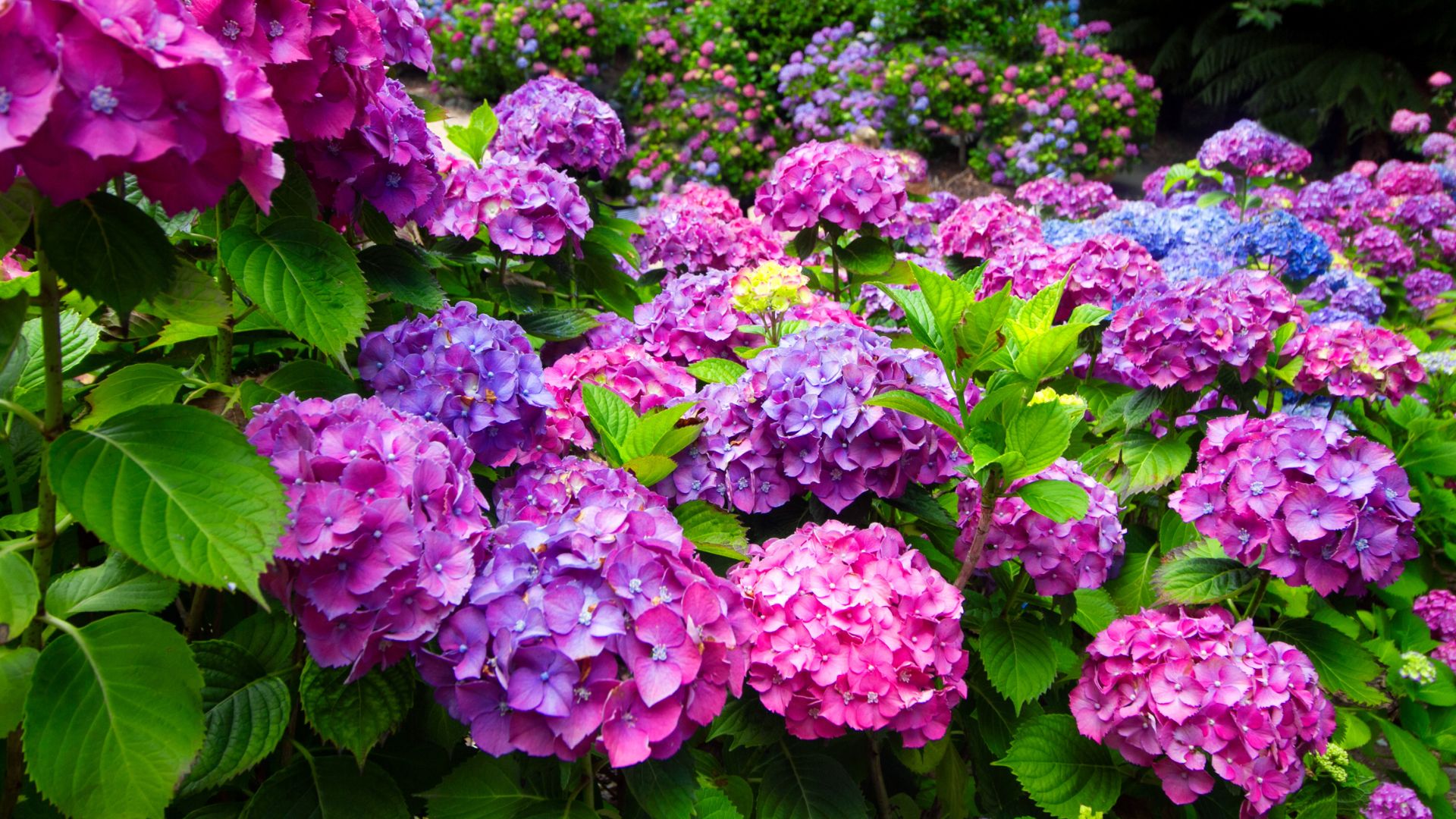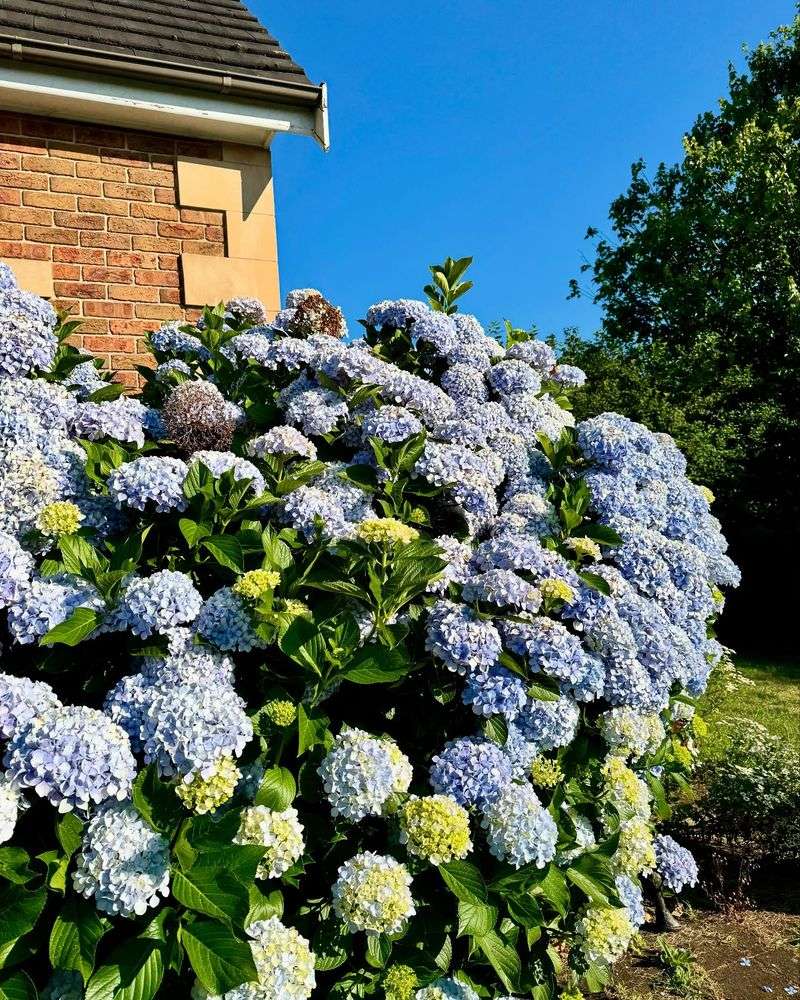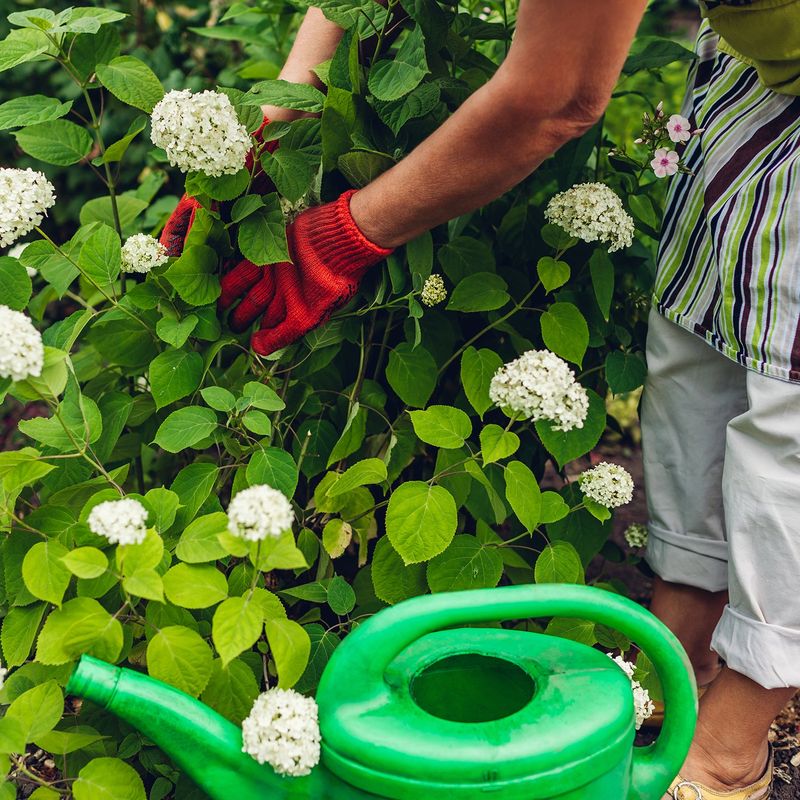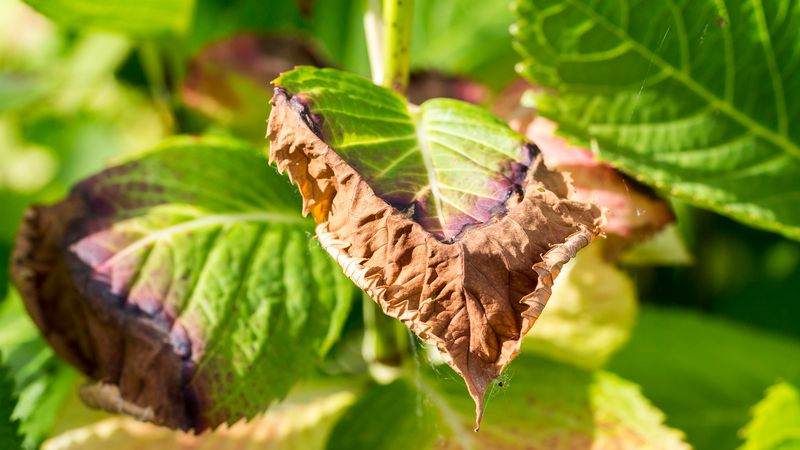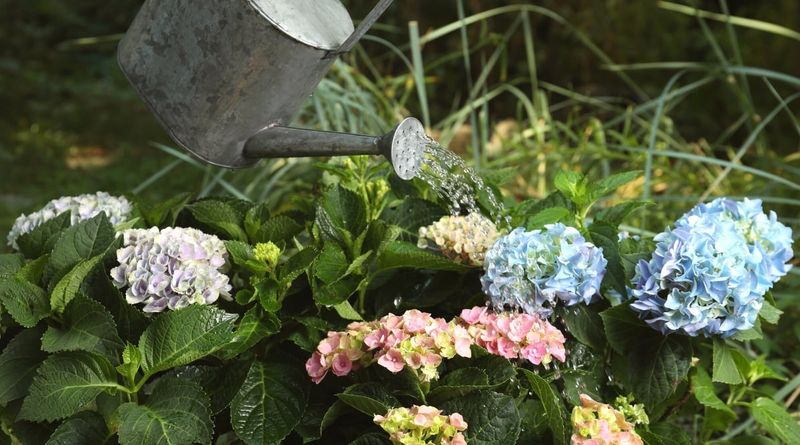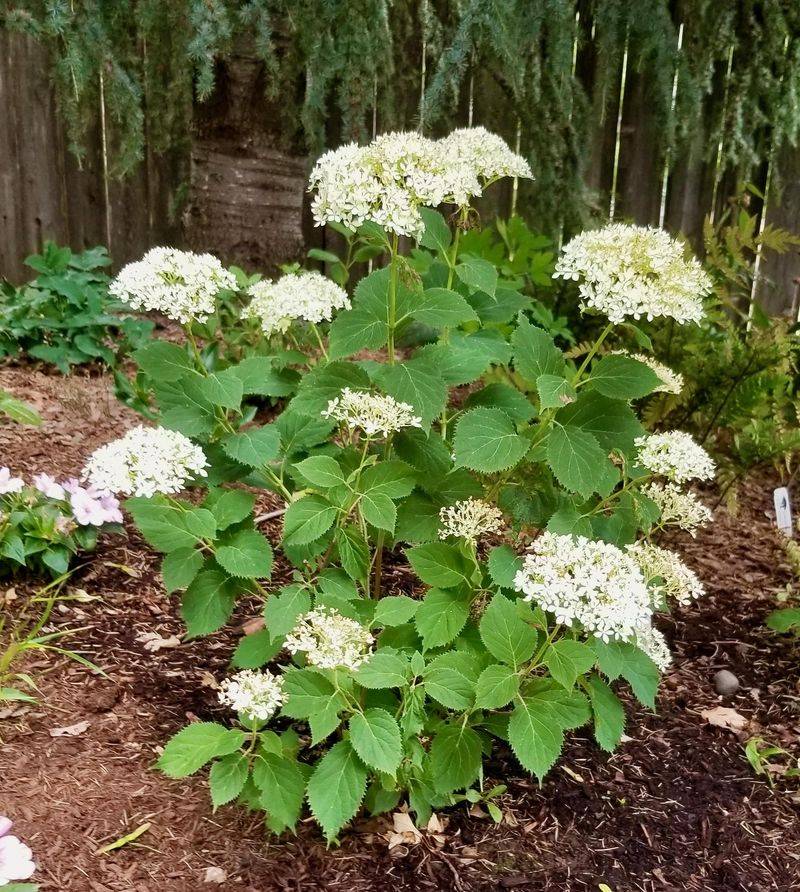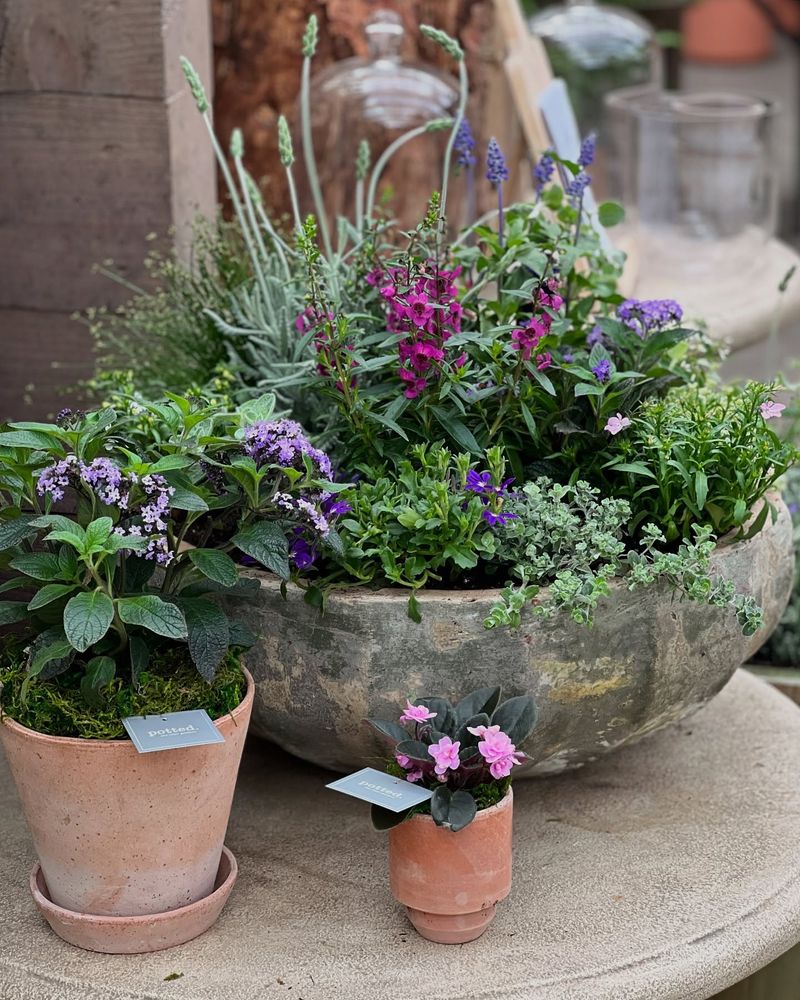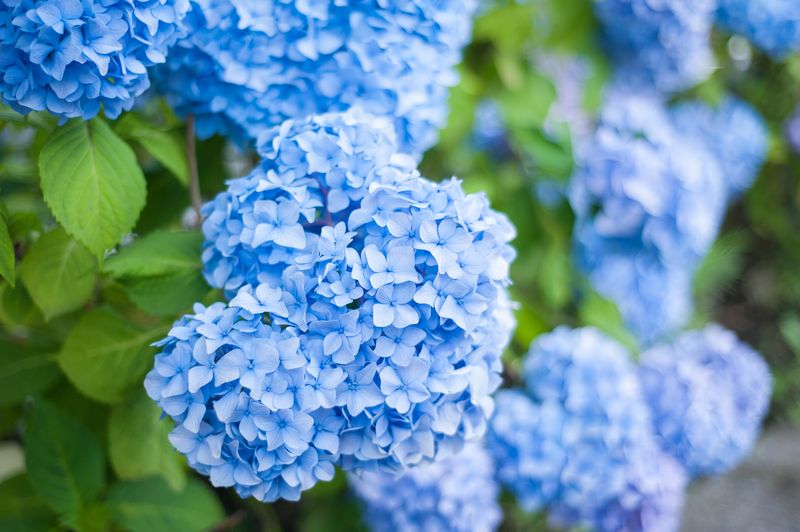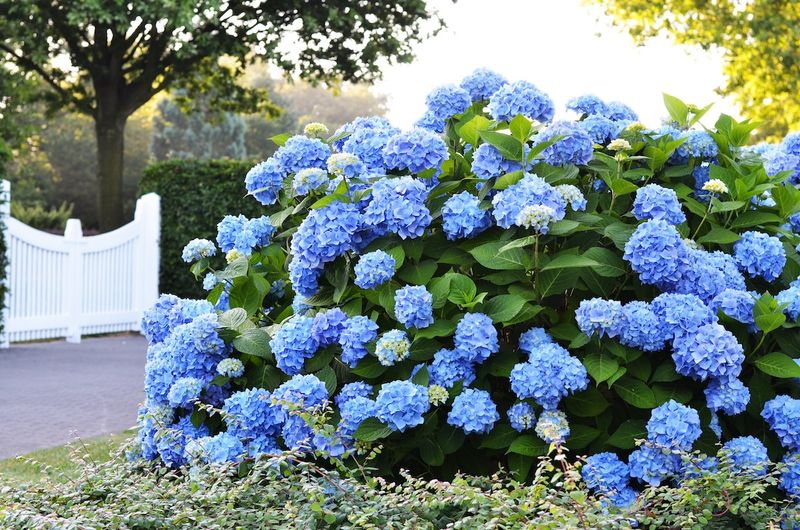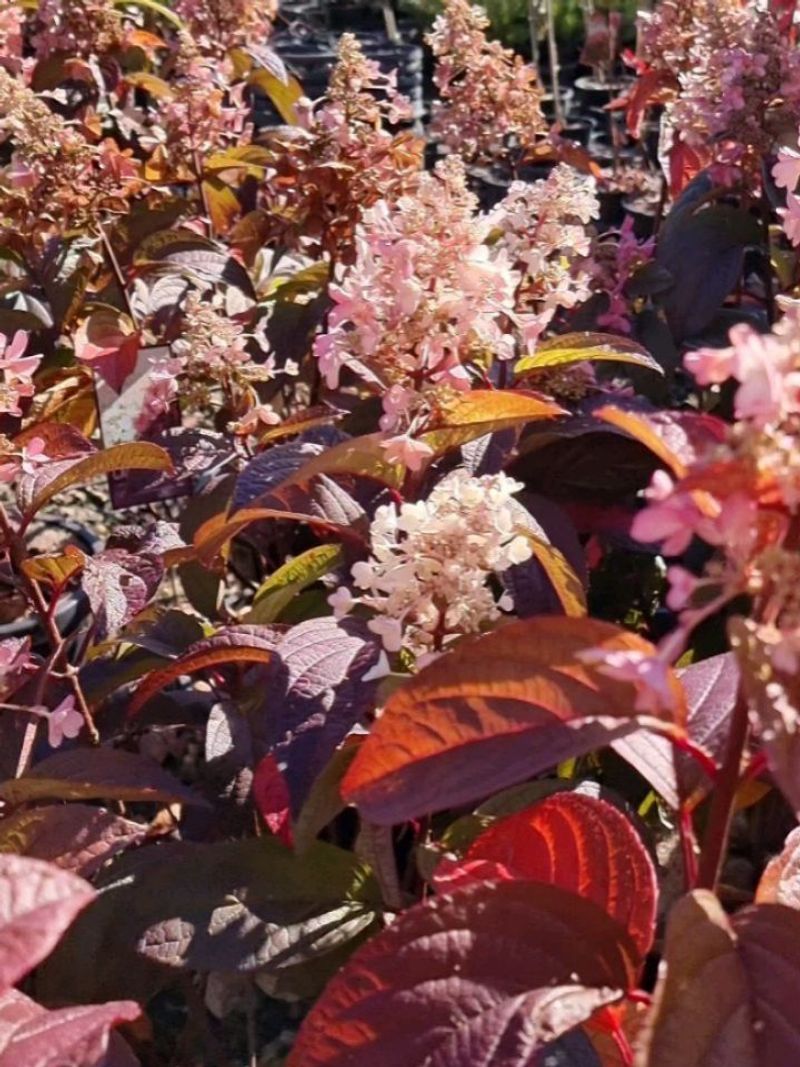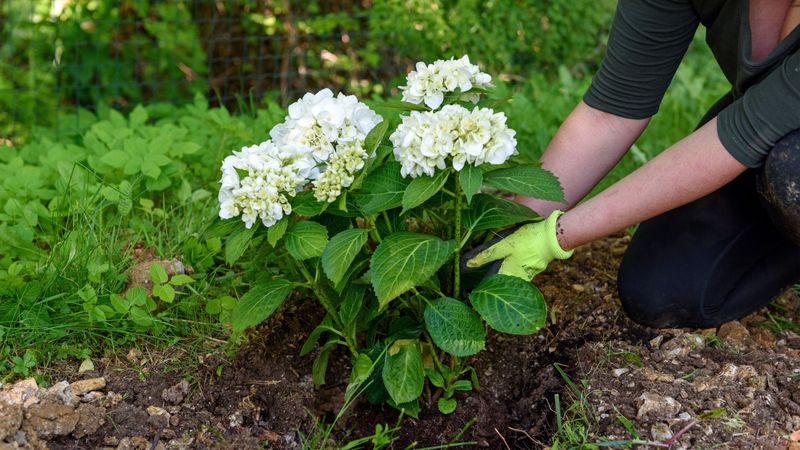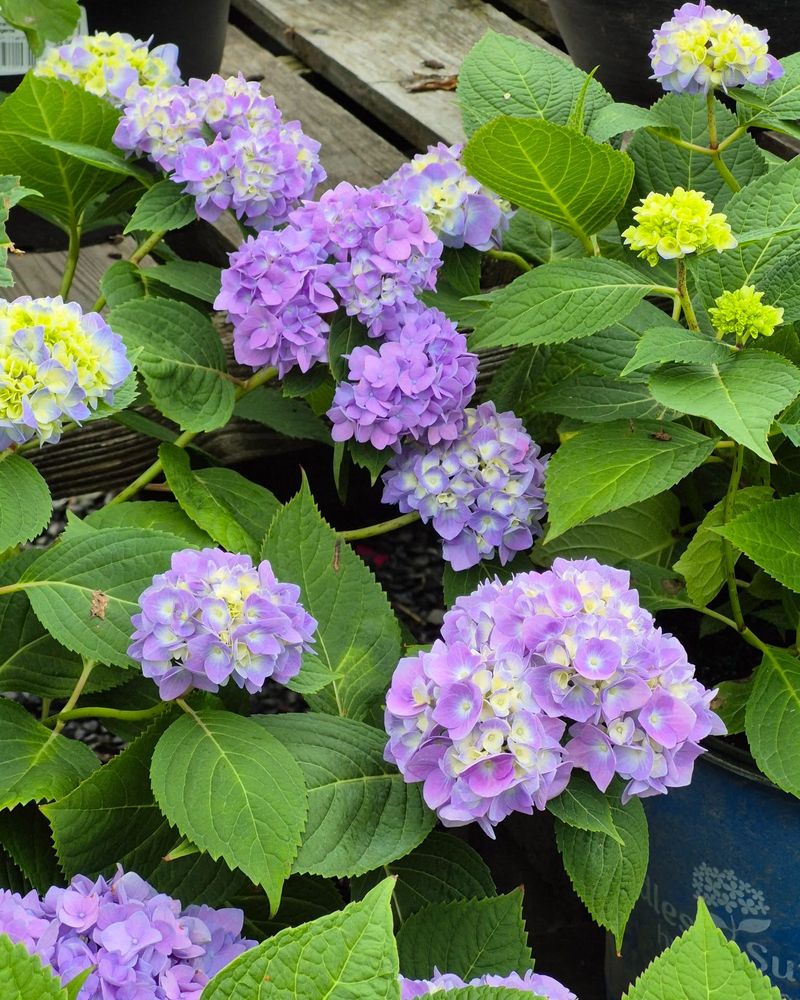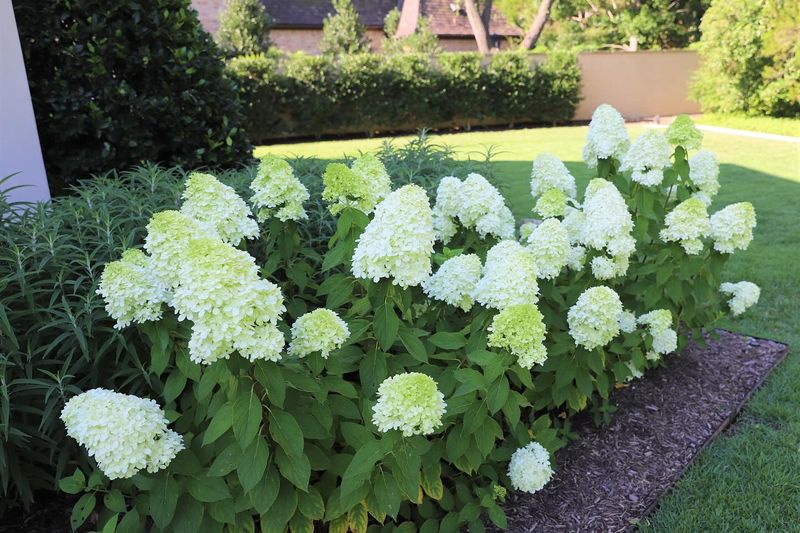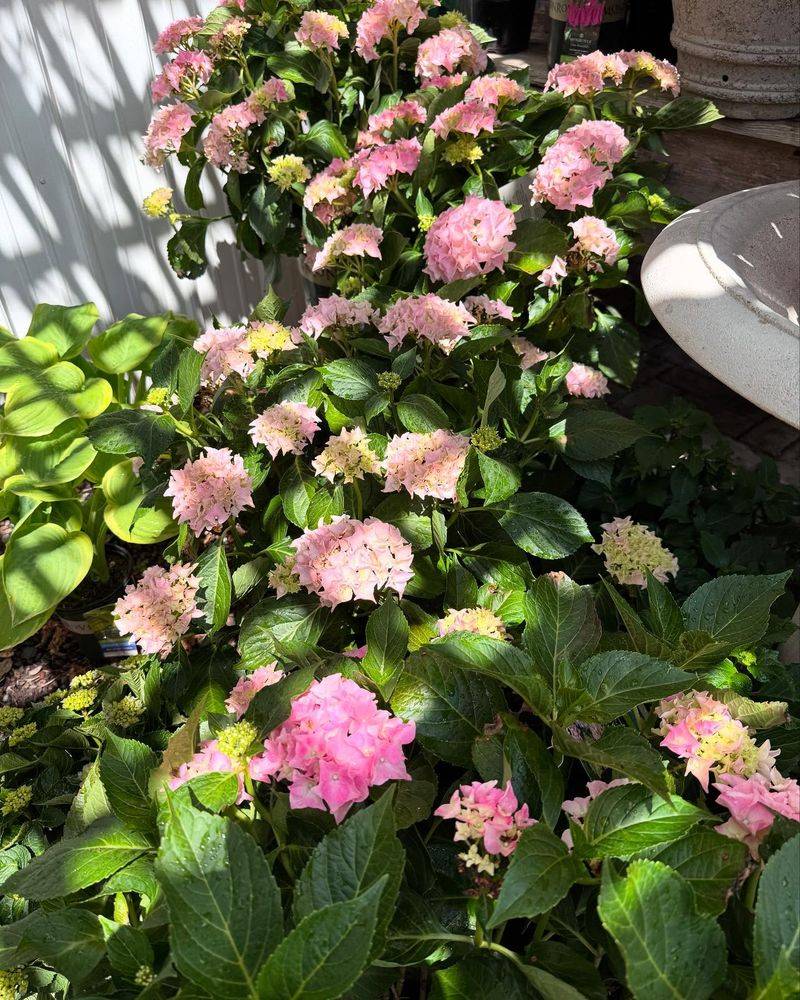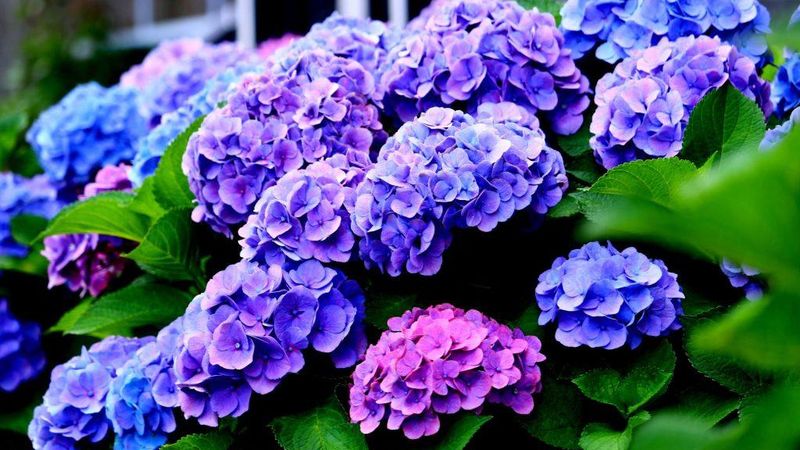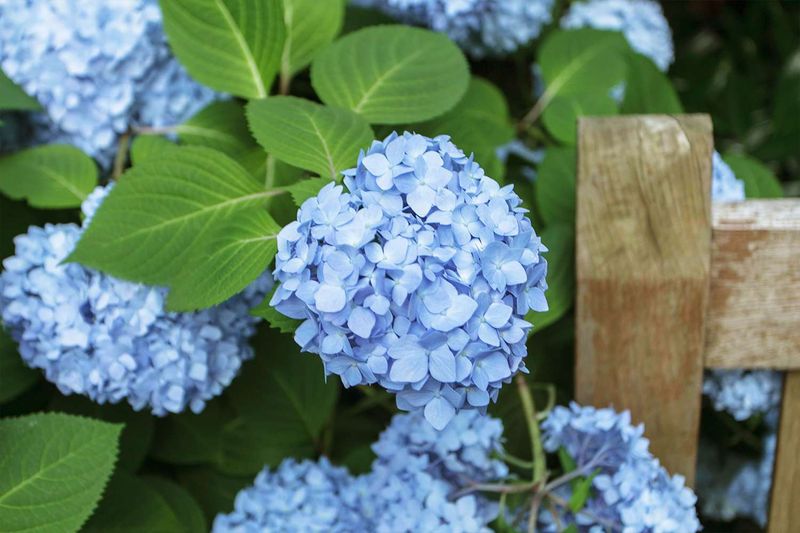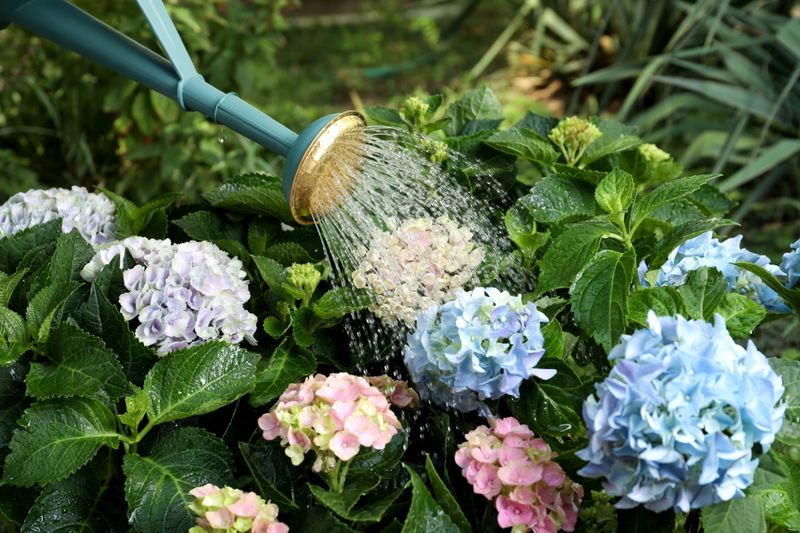Watering hydrangeas properly can be the difference between lackluster blooms and a stunning garden showpiece. Many gardeners struggle with these beautiful but sometimes finicky plants, unsure if they’re giving too much or too little moisture.
For me, what made the biggest difference was paying closer attention to how quickly the soil dried out in different spots of the yard. The plants gave clear signals when they needed a drink, but I had to learn to notice them.
Getting the watering routine right affects everything from bloom size to plant health and winter survival. Once you understand your hydrangeas’ specific needs, you’ll spend less time worrying and more time enjoying those gorgeous flower clusters.
1. Morning Is Prime Watering Time
Early morning watering gives hydrangeas the moisture they need before the day heats up. This timing allows leaves to dry completely before evening, reducing disease risks that come with wet foliage overnight.
I switched to morning watering last summer and immediately noticed fewer brown spots on leaves. The plants seemed more vigorous too.
Avoid afternoon watering when possible – much of that precious moisture evaporates before roots can absorb it. If you can only water in the evening, aim to keep the foliage dry by watering at soil level.
2. Deep Watering Beats Frequent Sprinkling
Shallow, frequent watering encourages weak surface roots that make hydrangeas more vulnerable to drought. Instead, water deeply but less often to encourage roots to grow downward into cooler, more consistently moist soil.
A good soaking once or twice a week is typically better than daily light sprinkles. My garden’s hydrangeas thrived when I switched to this method.
You’ll know you’ve watered deeply enough when moisture has penetrated 8-12 inches into the soil. Use a soil probe or simply dig a small test hole to check depth after watering.
3. Watch The Leaves For Thirst Signals
Hydrangea leaves tell you when water is needed – they droop slightly before any permanent damage occurs. This mild wilting is actually helpful, serving as an early warning system before the plant becomes seriously stressed.
Morning wilt that recovers by afternoon usually isn’t cause for alarm. It’s the persistent drooping that signals a real need for water.
Another sign to watch for is leaf edges turning brown or crispy. When I started paying attention to these subtle signals rather than sticking to a rigid schedule, my hydrangeas’ health improved dramatically.
4. Soil Type Determines Watering Frequency
Sandy soils drain quickly and may require watering twice as often as clay soils, which hold moisture longer. Knowing your soil type helps create an effective watering routine tailored to your garden’s specific conditions.
Testing is simple – grab a handful of moist soil and squeeze it. Sandy soil falls apart, loamy soil holds shape but crumbles when poked, and clay forms a sticky ball.
My backyard has heavy clay that stays wet for days, while the front garden’s sandier soil needs much more frequent attention. Adjusting my approach to each area made all the difference in hydrangea performance.
5. Rain Gauge Prevents Overwatering
Natural rainfall should count toward your hydrangeas’ water needs. Installing a simple rain gauge helps track exactly how much moisture your plants receive from nature, preventing the common mistake of overwatering after rain.
Generally, hydrangeas need about 1-2 inches of water weekly, including rainfall. Last summer, I realized I’d been drowning my plants by ignoring the substantial rainfall we’d received.
For container hydrangeas, lift the pot after a rain shower – if it feels heavy, hold off on additional watering. This simple check has saved many of my potted plants from root rot.
6. Mulch Locks In Precious Moisture
A 2-3 inch layer of organic mulch around hydrangeas dramatically reduces water evaporation and moderates soil temperature. Materials like shredded bark, compost, or pine straw work wonderfully to keep roots cool and moist.
Keep mulch pulled back about 2 inches from stems to prevent rot issues. Refreshing the layer each spring before hot weather hits pays huge dividends in water conservation.
After adding proper mulch around my hydrangeas, I cut my summer watering needs almost in half. The plants showed better stress tolerance during hot spells too.
7. Container Hydrangeas Need Special Attention
Potted hydrangeas dry out much faster than those planted in the ground – sometimes requiring daily watering during summer heat. The smaller the pot, the more frequently you’ll need to water.
The finger test works great for containers – stick your finger about 2 inches into the soil, and if it feels dry at that depth, it’s time to water. During last summer’s heat wave, my patio hydrangeas needed morning and evening watering to survive.
Consider using moisture-retaining potting mix with added coconut coir or water-absorbing crystals for container plantings. These additions have dramatically reduced how often I need to water.
8. Water Quality Matters More Than You Think
Hydrangeas can be sensitive to chlorine and other chemicals in tap water. If possible, use collected rainwater or let tap water sit overnight before using it to allow chlorine to dissipate.
Hard water with high mineral content can gradually affect soil pH, potentially changing bloom colors over time. My blue hydrangeas started shifting toward pink until I switched to filtered water.
For the most dramatic blue flowers, occasional watering with a tablespoon of aluminum sulfate dissolved in a gallon of water helps maintain the acidic soil these blooms require. Just be careful not to overdo this treatment.
9. Watering Tools Make A Difference
Using the right watering tools helps deliver moisture exactly where hydrangeas need it – at the root zone. Soaker hoses and drip irrigation systems are ideal since they minimize water waste and keep foliage dry.
A watering wand with a gentle shower head works well for manual watering. The extended reach lets you place water at soil level without bending or disturbing mulch.
After trying various methods, I found that my drip system with adjustable emitters gave the most consistent results with minimal effort. Setting timers to water in early morning hours made maintenance almost hands-free.
10. Seasonal Adjustments Are Necessary
Hydrangeas need different watering approaches throughout the year. Spring growth spurts and summer flowering periods demand more moisture than fall or dormant winter months.
During the hottest weeks of summer, you might need to double your normal watering frequency. Last July, I had to increase from twice weekly to every other day during a heat wave.
Don’t completely stop watering in fall – a good soaking before the ground freezes helps hydrangeas survive winter better. I give mine one deep watering monthly through fall until the first hard freeze, which has improved spring performance dramatically.
11. Weather Conditions Override Schedules
Rigid watering schedules often fail because they don’t account for changing weather. Hot, windy days increase water needs dramatically, while cool, cloudy periods reduce them.
During a particularly humid week last summer, I stuck to my regular watering routine and nearly lost plants to root rot. Learning to adjust based on actual conditions saved them.
A good rule is to add an extra watering session when temperatures exceed 85°F for multiple days. Conversely, after several days of rain or unusually cool weather, delay your regular watering until the soil begins to dry.
12. Different Varieties Have Different Needs
Not all hydrangeas are created equal when it comes to water requirements. Smooth hydrangeas (H. arborescens) and panicle types (H. paniculata) generally tolerate drier conditions than mophead varieties (H. macrophylla).
Oakleaf hydrangeas (H. quercifolia) have shown impressive drought tolerance in my garden once established. The mountain varieties (H. serrata) prefer consistent moisture without ever sitting in soggy soil.
When I grouped my hydrangeas by water needs rather than just appearance, maintenance became much simpler. The thirstier varieties now share garden space, making efficient watering possible.
13. First-Year Plants Need Extra Care
Newly planted hydrangeas require more frequent watering than established plants. Their limited root systems can’t reach deep soil moisture, making them vulnerable to drought stress.
For the first growing season, aim to water deeply twice weekly even if established plants nearby need less. Creating a soil basin around new plants helps direct water exactly where needed.
I lost several young hydrangeas before learning this lesson, but now make special tags for first-year plants as reminders of their extra needs. The investment in attention that first year pays off with vigorous, well-established plants that thrive for years.
14. Root Competition Affects Water Needs
Hydrangeas planted near trees or large shrubs face intense competition for water. Tree roots can steal moisture from your hydrangeas before they get their share, especially during dry periods.
When planting near trees, create slightly deeper watering basins and water more frequently. You might need to water these locations up to twice as often as hydrangeas in open areas.
My side yard hydrangeas struggled until I recognized they were competing with a nearby maple tree. Now I give them priority watering and have installed root barriers to help them access the moisture they need.
15. Watering Affects Bloom Color
The amount and type of water can influence hydrangea bloom colors, especially in the bigleaf varieties. Consistently dry conditions often intensify colors, while overwatering can lead to paler blooms.
Water quality matters too – alkaline water can gradually shift blue hydrangeas toward pink by changing soil pH. Using collected rainwater helps maintain true colors better than tap water in many regions.
My experiments with controlled watering showed that slightly stressing plants (without causing damage) produced more vibrant flower colors. Finding that sweet spot between too much and too little water takes practice but yields spectacular results.
16. The Finger Test Never Fails
Fancy moisture meters can fail, but the finger test is always reliable. Simply insert your finger about 2 inches into the soil near your hydrangea – if it feels dry at that depth, it’s time to water.
Different areas of your garden may have surprisingly different moisture levels. I regularly check several spots around each plant, especially in partially shaded locations where soil drying rates vary.
Morning is the best time to perform this test, as it gives the most accurate reading of moisture levels. This simple habit has prevented more watering mistakes than any other technique I’ve tried.
17. Water At The Right Pace
How quickly you apply water matters almost as much as how much you apply. Water delivered too fast runs off rather than soaking in, especially on slopes or compacted soil.
Slow, steady watering allows moisture to penetrate deeply to hydrangea roots. Setting hose or irrigation systems to a gentle flow for longer periods works much better than a quick, heavy drenching.
Creating a small soil basin around plants helps capture and direct water to roots. After switching to slow-flow drip emitters, the soil moisture in my hydrangea beds stayed more consistent throughout the root zone.

